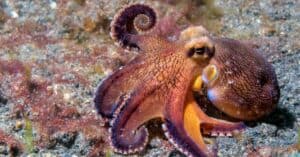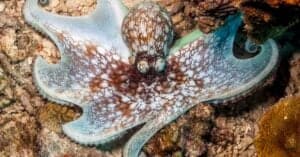It’s fascinating to see an octopus change colors. Many of us have been completely mesmerized by the octopus or one of its sister cephalopods’ flowing hues for the duration of a dive. The term “chameleons of the sea” is sometimes used to refer to octopuses (not octopi). However, as you’ll see later, a chameleon‘s ability to blend in is inferior to that of the powerful octopus.
Amazing creatures like octopuses employ camouflage to catch prey and hide from predators. Octopuses have excellent vision, which they use to blend in with their surroundings. These animals are able to conceal themselves in several different ways.
Check Out The Entire Video Below!
A video on YouTube shows just how incredible it is when an octopus hides in plain sight on the ocean floor, within reefs, and more. Octopuses employ a disguise to alter the appearance and texture of their skin. They have muscles under their skin that they can regulate to make it look rough or smooth. For instance, an octopus would alter its skin to resemble the bumpiness of a nearby plant in order to fit in better.
Octopuses also conceal themselves by altering their movement patterns. For instance, an octopus will alter the appearance of its skin and fold all of its legs close to its body to simulate the way waves could push a rock through the ocean in order to blend in as a rock.
The Science Behind It
Octopuses use camouflage in an unusual way by altering the color of their skin. The video below shows just how effortlessly these creatures do it! They have unique skin cells that are loaded with various hues, which allows them to modify the color of their skin. An octopus’s skin includes three layers of chromatophores, and each layer contains xanthommatin particles that bounce back a distinct color.
Yellow is produced by the top layer, red is reflected back by the middle layer, and brown is produced by the bottom layer. The cephalopods can produce a wide range of hues by combining these colors and altering the structure of the chromatophores in each layer.
Most octopuses and other cephalopods are color blind, despite their capacity to produce a wide range of distinct hues. The only type of photoreceptor found in octopus eyes transforms light into brain signals, limiting their ability to detect variations in light intensity. This makes it even more incredible that they can blend in so flawlessly.
Even though many creatures use camouflage, octopuses stand out, partly because of how quickly and precisely they can switch between a wide range of hues. It lasts just a split second. The quickest transitions, according to experts, happen in less than 100 milliseconds, or less than the blink of an eye.
The photo featured at the top of this post is © iStock.com/:TheSP4N1SH
Thank you for reading! Have some feedback for us? Contact the AZ Animals editorial team.






